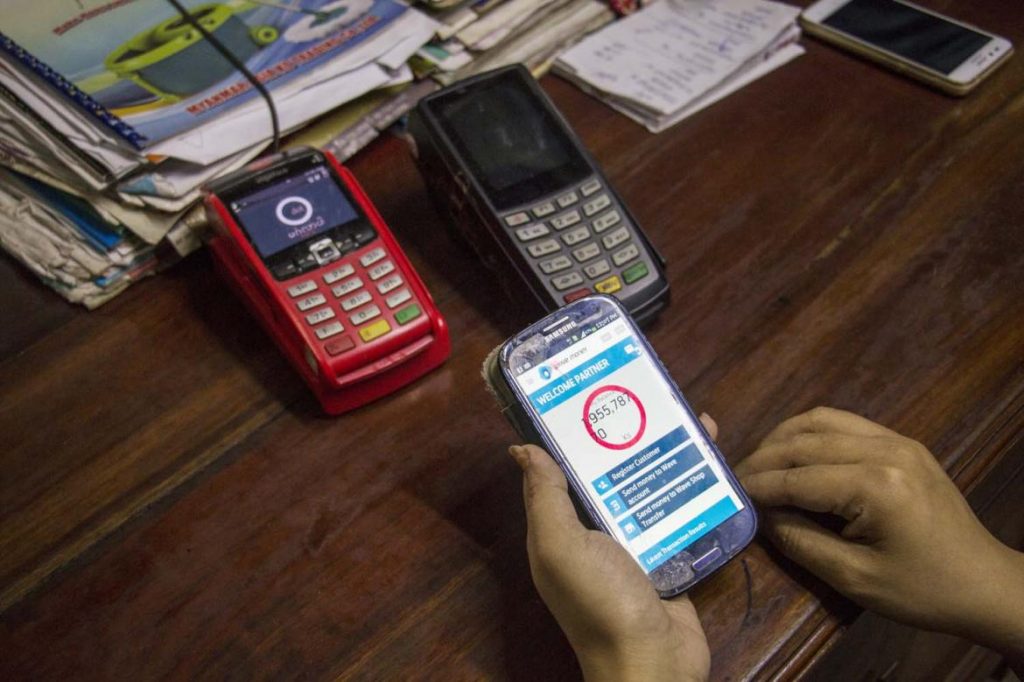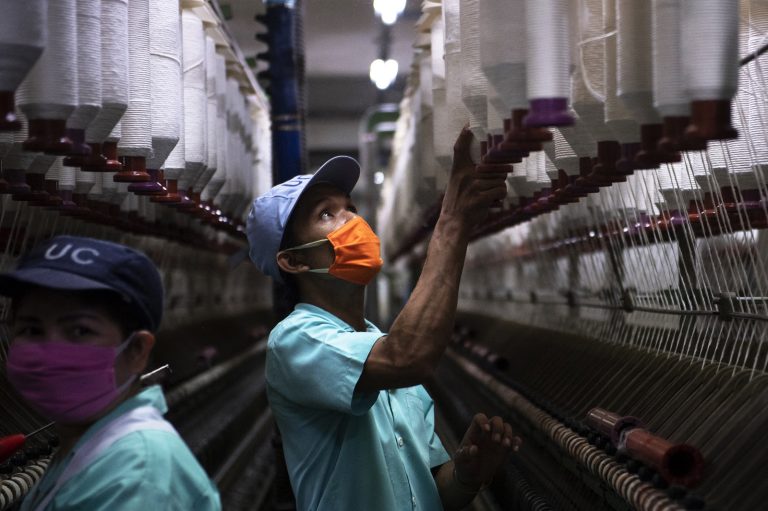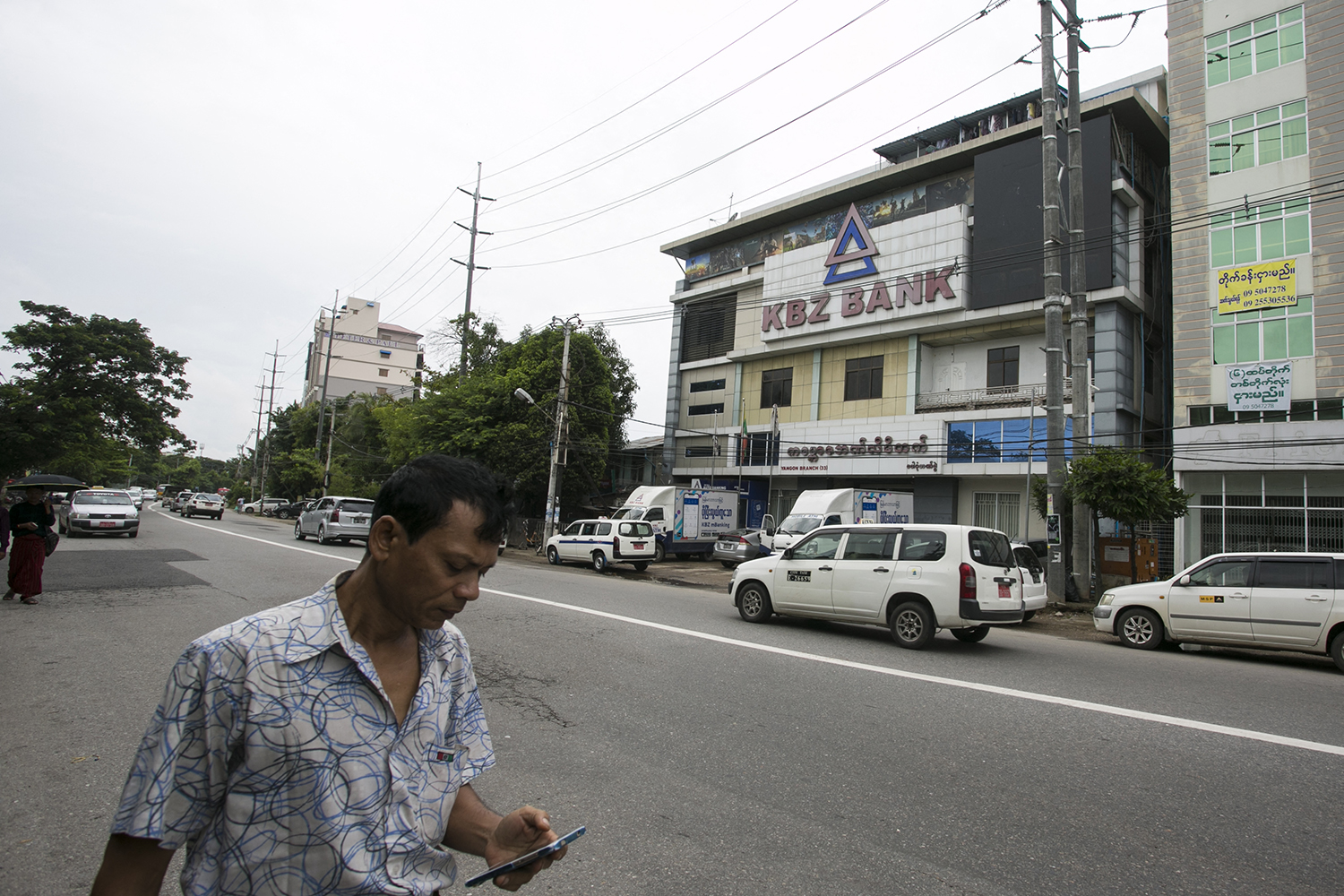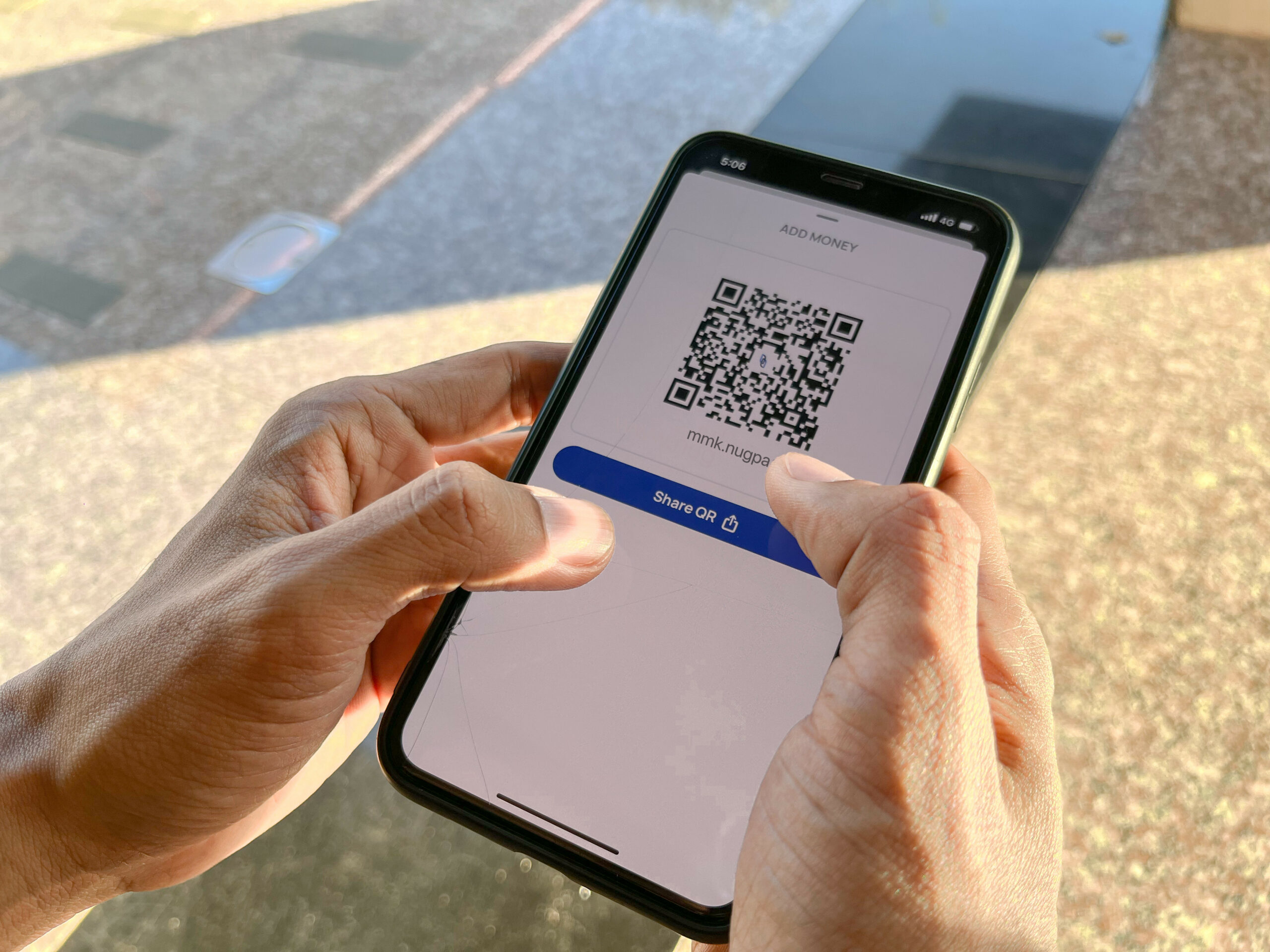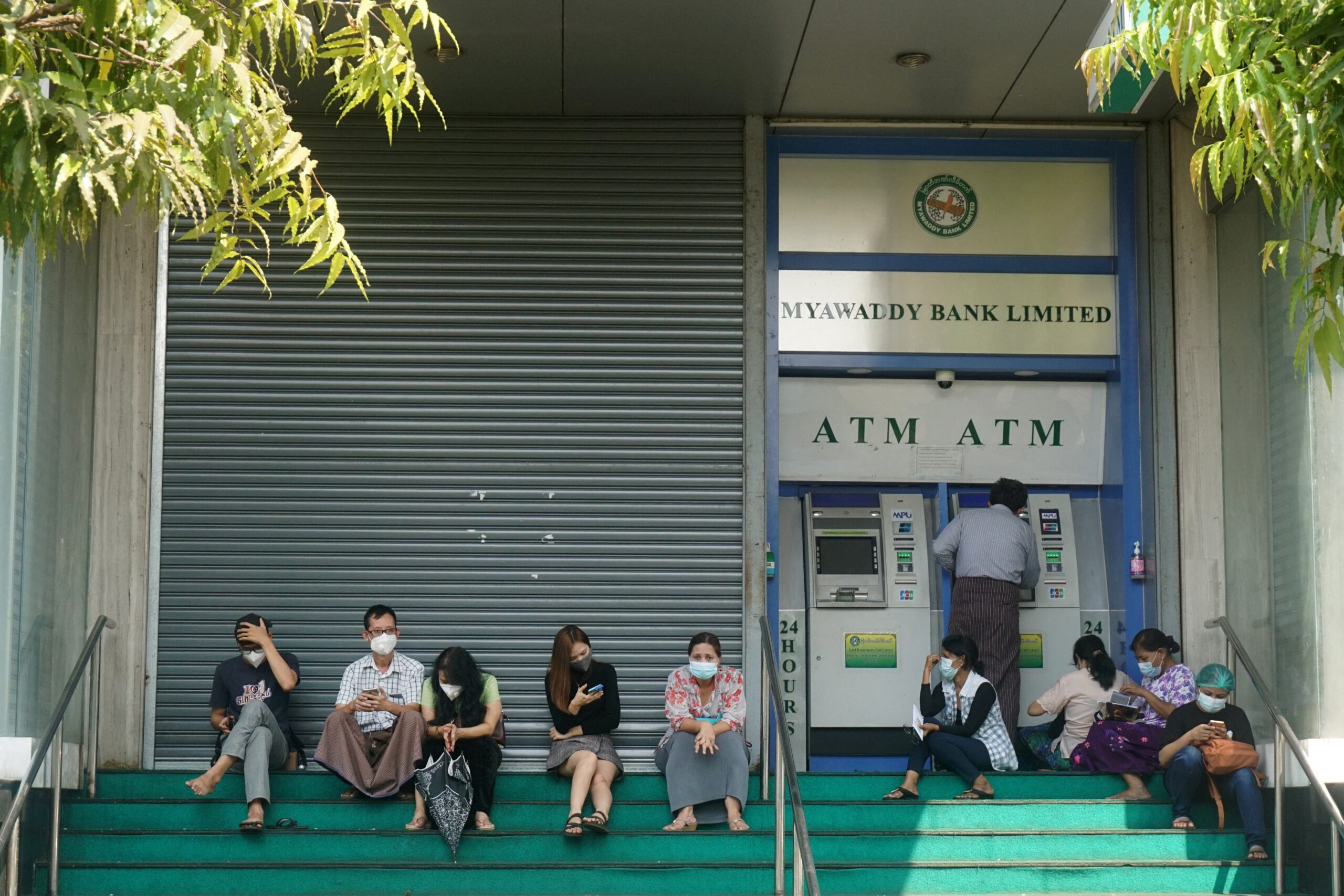As the market for consumer remittances reaches saturation, mobile money operators are looking to smartphone apps to continue their growth.
By KONRAD STAEHELIN | FRONTIER
IF THE mobile money market were a football match, then the second half has just begun.
As the undisputed market leader, Wave Money is already a few goals ahead. It reports having almost 50,000 agents and more than 11 million customers, who remitted US$2.8 billion between January and September of this year.
By the end of the calendar year, remittances might hit $4 billion – triple last year’s figure, and around 5 percent of the country’s GDP. “We lead in money transfer, but digital payments has become competitive,“ Wave Money CEO Brad Jones told finance platform Digfin in February.
Game on.
Support more independent journalism like this. Sign up to be a Frontier member.
Less than three in 10 Myanmar adults have access to formal banking but there are now more registered SIM cards than people. With a large portion of the working population living away from their families, and often wanting to send money back home, fintech entrepreneurs spotted an opportunity in the remittance market.
They launched services that enable people to remit money without having to use an app. It works like this: the person sending money hands it over to a mom-and-pop store that is registered as a mobile money agent, and the store sends a code by SMS to the phone of the intended recipient of the transfer. They then withdraw the money by showing the code to a mobile money agent from the same platform.
For centuries, Myanmar people had sent cash through the trust-based hundi system, which also used a system of agents to transfer money. In 2016, hundi still accounted for 6 percent of money transfers in Myanmar, according to surveys that Wave Money commissioned a market research firm, Kantar, to carry out each quarter. By March 2019, hundi accounted for only 1pc of transfers, the surveys found.
Other methods of remitting money have experienced similar declines. In 2016, about 15pc of people were sending money by putting it in a sealed envelope and paying a bus company to deliver it to its destination. A further 13 percent trusted friends and family to deliver it, while 16 percent just delivered it in person. In three years, these methods shrunk to 4pc, 6pc, and 5pc respectively, according to Kantar.
“Once greater mobile financial services coverage is achieved, I expect these informal channels to fall away in the way that they have in other jurisdictions like India and the Philippines,” Pedro Jose Fausto Bernardo, a foreign consulting attorney at law firm Kelvin Chia Yangon told Frontier.
Their loss is mobile money’s gain. “There is a lot of potential in the Myanmar remittance market,“ Daw Khin Ti Kyaing Soe, head of marketing at True Money’s Myanmar operations, told Frontier. With 20,000 agents, more than 5 million customers and remittances of $65 million, the Thai conglomerate is the second-largest provider of these over-the-counter money transfers in Myanmar and is, according to Khin Ti Kyaing Soe, “growing aggressively month-on-month”.
But with the Kantar research showing that mobile money accounts for 80pc of all money transfers – up from less than 1pc in 2016 – the opportunities for further growth in this segment are limited. Once the ceiling is reached, it will be almost be a zero-sum game, where companies will only gain business by luring customers from rival operators. The likely consequence will be increased pressure on fees, and therefore revenues.
Smartphones provide mobile money operators with an alternative path to revenue growth: mobile payments through proprietary apps, often incentivised by rewards such as discounts sponsored by partner companies. Topping up phone credit, paying bills, making purchases at shops using QR codes, online payments and transfers to other users are the second half of the game – and there’s still plenty of time on the clock.
Since it doesn’t offer a smartphone app to its Myanmar customers, True Money isn’t even out on the pitch. But there is no shortage of other players. Wave Money is one of no less than 10 mobile money operators, including KBZ Pay, Ongo, CB Pay, Onepay, M-Pitesan, MyMoney and Ok Dollar. On October 1, state-owned MPT acquired a Mobile Financial Services Licence for a new product called MPT Money.
Although few of them have published any recent figures on their customer base, KBZ Pay, which operates under the country’s largest bank, has made an impressive start. Developed in partnership with Chinese tech giant Huawei, the app launched in late 2018 but had amassed more than 2 million customers by June, the Myanmar Times reported, and expected to double that by the end of this year.
Despite the crowded field all fighting for the same customers, Jones from Wave Money told Frontier: “We see our main competitor in Myanmar still being cash.”
Operators are actually working together to grow the pie. In cooperation with the Central Bank of Myanmar, which regulates the sector, they are about to introduce a degree of interoperability through QR codes. The initiative will mean that retailers can process payments for goods or services using a single QR code, rather than having a QR code for each mobile payment system.
Still, real interoperability would mean being able to transfer money between the mobile wallets offered by different operators – for example, from KBZ Pay to Wave Money. “We are working as part of the project team facilitated by the Central Bank of Myanmar to develop true interoperability between mobile financial services providers and banks,” Jones said. “We don’t have a timeline for launch as yet but the aspiration of sending money between competitors is aligned with the vision for interoperability.”


